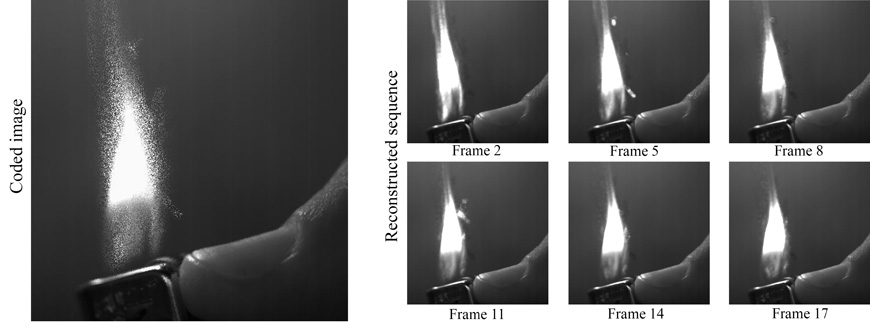News
- April, 2016: High-speed video dataset available! (see Downloads).
- April, 2016: Paper available (see Downloads).
- April, 2016: Web launched.
Abstract
Traditional video capture is limited by the trade-off between spatial and temporal resolution. When capturing videos of high temporal resolution, the spatial resolutions decreases due to bandwidth limitations in the capture system. Achieving both high spatial \textit{and} temporal resolution is only possible with highly specialized and very expensive hardware; although the bandwidth is higher, the same basic trade-off remains. In this paper, we make use of a \textit{single-shot}, high-speed video capture system, in order to overcome this limitation. It is based on compressive sensing, and relies on dictionary learning for sparse video representation. This allows capturing a video sequence by coding the temporal information in a single frame, and then reconstructing the full video sequence from this single coded image. We perform an in-depth analysis of the parameters of influence in the system, providing insights for future developments of similar systems.
Downloads
Bibtex
Related
- 2016: Convolutional Sparse Coding for Capturing High Speed Video Content
- 2016: Convolutional Sparse Coding for High Dynamic Range Imaging
Acknowledgements
We would like to thank the Laser and Optical Technologies department from the Aragon Institute of Engineering Research (I3A), as well as the Universidad Rey Juan Carlos for providing a high-speed camera and some of the videos used in this paper. This research has been partially funded by Spanish Ministry of Science and Technology (project LIGHTSLICE), the BBVA Foundation, the Max Planck Center for Visual Computing and Communication, and a gift from Adobe. Diego Gutierrez is additionally supported by a Google Faculty Research Award.
